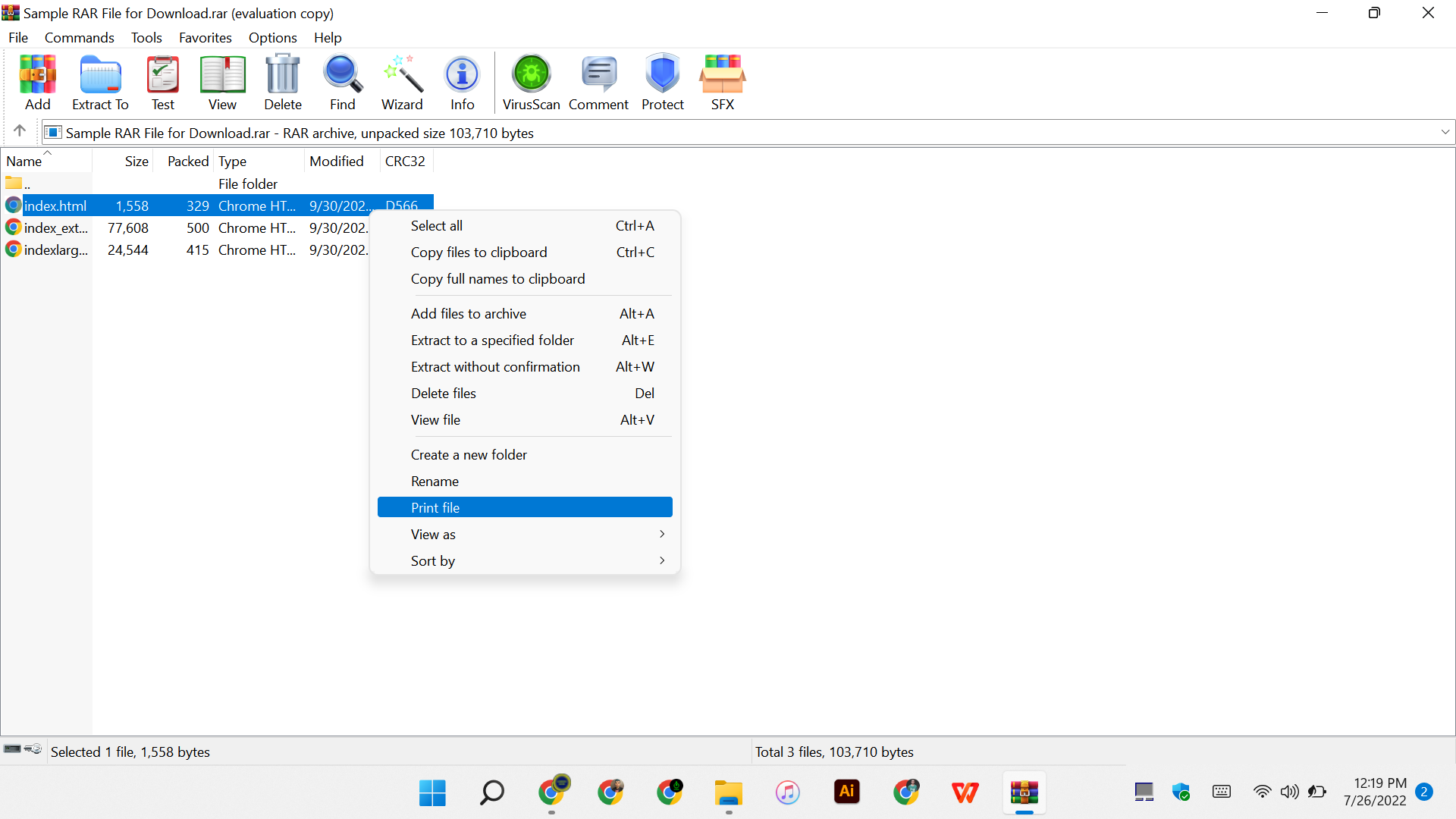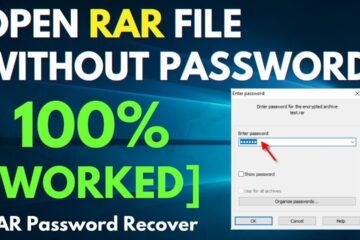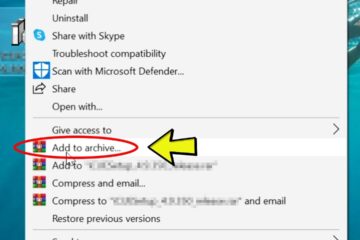Converting a WinRAR file to a PDF can seem like a daunting task, especially for those unfamiliar with the process. However, with the right tools and a bit of guidance, it can be a straightforward and efficient procedure. WinRAR files are compressed archives that can contain various types of files, including documents, images, and more. Converting these files to PDF format ensures that they are easily accessible and shareable across different platforms and devices. This article will walk you through the step-by-step process of converting a WinRAR file to a PDF, providing you with the necessary tools and tips to make the transition seamless and hassle-free.
How to Convert WinRAR File to PDF?
Converting a WinRAR file to a PDF involves a few steps, as WinRAR files are compressed archives that need to be extracted before conversion. Below, we will guide you through the process in detail, including the necessary tools and steps to ensure a smooth conversion.
Step 1: Extract the WinRAR File
Before you can convert a WinRAR file to a PDF, you need to extract its contents. Here’s how:
- Download and install WinRAR or a similar extraction tool if you haven’t already.
- Locate the WinRAR file on your computer.
- Right-click on the file and select Extract Here or Extract to a specific folder.
- Wait for the extraction process to complete.
Step 2: Convert the Extracted Files to PDF
Once the files are extracted, you can convert them to PDF. This process can vary depending on the type of files you extracted (e.g., images, documents, etc.). Here are the steps for common file types:
- For Documents (e.g., DOCX, TXT): Use a word processor like Microsoft Word or LibreOffice. Open the document, then go to File > Save As > PDF.
- For Images (e.g., JPG, PNG): Use an image editor like Adobe Photoshop or GIMP. Open the image, then go to File > Export > PDF.
- For Web Pages: Use a web browser with a built-in PDF exporter or a browser extension. Open the web page, then go to File > Print > Save as PDF.
Step 3: Use Online Conversion Tools
If you prefer a more automated approach, you can use online conversion tools. These tools are convenient and often free. Here are a few popular options:
- SmallPDF: Visit SmallPDF and select Convert to PDF. Upload your file, and the tool will handle the conversion.
- ILovePDF: Visit ILovePDF and select Convert to PDF. Upload your file and follow the on-screen instructions.
- PDF24: Visit PDF24 and select Create PDF. Upload your file and download the converted PDF.
Step 4: Batch Conversion for Multiple Files
If you have multiple files to convert, batch conversion can save you time. Here’s how to do it:
- Use a tool like PDFsam Basic or Bulk PDF Creator.
- Open the tool and select the files you want to convert.
- Choose the output format as PDF.
- Start the conversion process and wait for it to complete.
Step 5: Verify the Converted PDF Files
After converting your files, it’s important to verify that the PDF documents are correct and complete. Here’s what to check:
- Content Accuracy: Ensure that all text and images are correctly rendered and legible.
- Layout: Check that the layout of the PDF matches the original file.
- File Size: Verify that the file size is appropriate and not excessively large.
- Security: If necessary, add password protection or other security features to your PDF files.
| Step | Action | Tools/Software |
|---|---|---|
| 1 | Extract the WinRAR file | WinRAR, 7-Zip |
| 2 | Convert extracted files to PDF | Microsoft Word, LibreOffice, Adobe Photoshop, GIMP |
| 3 | Use online conversion tools | SmallPDF, ILovePDF, PDF24 |
| 4 | Batch conversion for multiple files | PDFsam Basic, Bulk PDF Creator |
| 5 | Verify the converted PDF files | Adobe Acrobat Reader, Preview (Mac) |

How to open a PDF RAR file?
To open a PDF RAR file, you need to follow several steps to extract the contents and then open the PDF file. Here is a detailed guide:
1. Download and Install a RAR File Extractor
To extract the contents of a RAR file, you need a compatible file extraction software. Some popular options include WinRAR, 7-Zip, and PeaZip. Here’s how you can install one:
- Visit the official website of the chosen software (e.g., WinRAR or 7-Zip).
- Download the installer for your operating system (Windows, macOS, or Linux).
- Run the installer and follow the on-screen instructions to complete the installation.
2. Extract the RAR File
Once you have the file extraction software installed, you can proceed to extract the contents of the RAR file. Here’s how:
- Locate the RAR file on your computer.
- Right-click on the RAR file and select Extract Here or Extract to… depending on the software you are using.
- Choose a destination folder where you want to extract the files.
3. Locate the Extracted PDF File
After extracting the RAR file, you need to find the PDF file within the extracted files. Here’s what you should do:
- Navigate to the destination folder where the files were extracted.
- Look for the PDF file in the folder. It will have a .pdf extension.
- Once you find the PDF file, you can proceed to open it.
4. Open the PDF File
To open the PDF file, you need a PDF reader. Adobe Acrobat Reader is a widely used and reliable option. Here’s how you can open the PDF:
- If you don’t have a PDF reader installed, download and install Adobe Acrobat Reader from the official website.
- Once the PDF reader is installed, double-click on the PDF file to open it.
- The PDF file will open in the reader, and you can view its contents.
5. Troubleshooting Common Issues
If you encounter any issues while opening the PDF RAR file, here are some troubleshooting steps:
- File Corrupted: If the RAR file is corrupted, try downloading it again or obtaining it from a different source.
- Incorrect Password: If the RAR file is password-protected, make sure you enter the correct password when prompted.
- Software Compatibility: Ensure that you are using the latest version of the file extraction software and PDF reader.
- File Not Found: If you can’t find the PDF file after extraction, double-check the destination folder and ensure the extraction was successful.
- System Permissions: If you receive an error related to system permissions, try running the file extraction software as an administrator.




